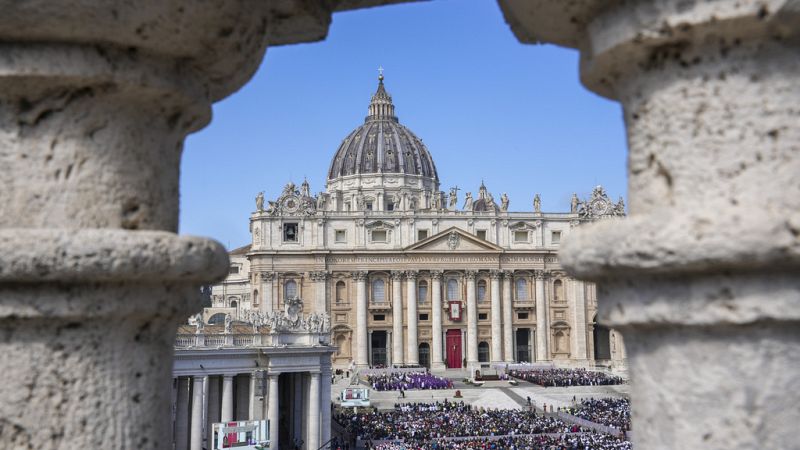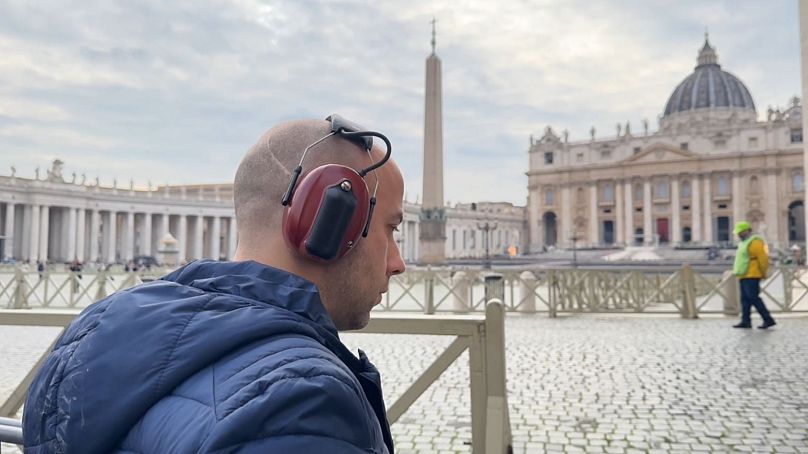Bring the noise: 'Electric Jubilee' turns up volume on Rome's hidden sounds

In the heart of Rome, under pressure from an unending flow of tourists and faithful making a pilgrimage for the Jubilee, an exhibition is inviting us to reconsider what we feel - or rather, what we do not feel.
'Electrical Jubilee', now on at the Goethe-Institut KuntsRaum, is a sensory and artistic experience that gives voice to the eternal city as it undergoes continuous transformation during the Holy Year 2025 as declared by Pope Francis.
The invisible echo of the Jubilee: Rome as you have never heard it
The project, conceived by sound art pioneer Christina Kubisch and produced with photographer Frank Paul and programmer and musician Tom Thiel, is a deep immersion in the soundscape of a Rome that welcomes millions of pilgrims.
"Rome has been transformed: buildings everywhere, noise everywhere. We joined forces and I, as a photographer, made this space visible and, in this space, we recorded acoustic and electromagnetic recordings to make them accessible to everyone, even on the internet, and to get another perspective view of Rome,' says Paul.
Rome, city of frequencies: the sound of the sacred and the digital
The Electrical Walks - Kubisch's famous 'sound walks' - become a secular, almost meditative ritual here.
With electromagnetic induction headphones, people are guided through the invisible waves that envelop the city: repeaters, wi-fi systems, smartphones, urban signals that we normally ignore but which, thanks to the work of Kubisch, Paul and Thiel, are revealed in all their intensity.
In Rome, a city of millennial echoes and modern devotions, these sounds take on an almost spiritual dimension during the Jubilee.
'Rome is never at peace,' Kubisch says, 'The city speaks an intense language of discussion, of exchange. The electromagnetic world is like that too: dense, fascinating, alive'.
This year of celebration adds a layer of sound: the silence of construction sites broken by the buzz of the crowd of pilgrims, the noise of buses, trams, and cars, as well as the electromagnetic waves that characterise what can be defined as the “electric sky” of Rome," explains Kubisch.
An exhibition that can be heard, seen and created
The layout is reminiscent of a large creative workshop: photographs, videos, documentation of the walks and interactive installations allow visitors to digitally explore the jubilee areas and hear their hidden sounds.
With 'The Mixer Project', every spectator can become a composer: a four-channel controller enables the mixing of acoustic and electromagnetic sounds recorded in Rome and the creation of personalised compositions, which can be downloaded in MP3 format.
The mixing process, thanks to an intuitive interface created by Thiel, lets people easily compose their own personal 'urban music'. The result can be taken home on a USB stick or received by email.
"I like to make the audience get creative," says Tom Thiel. "With 40 sounds recorded from the four papal basilicas (St. Peter's in the Vatican, St. John Lateran, St. Mary Major and St. Paul Outside the Walls, Ed.), everyone can compose their own sound version of Rome. You can mix bird songs and the hum of wi-fi: natural sounds versus electromagnetic sounds."
Art as an urban seismograph
'Electrical Jubilee' is not just an exhibition. It is an electroacoustic portrait of Rome at its moment of maximum transformative tension. It is art that listens, science that tells, technology that reveals. It is an invitation to reconsider the city through its hidden noises, to discover the symphony of our digital present in one of the world's oldest cities.
Since 2003, Electrical Walks have traversed 95 cities around the world, from New York to Nairobi, from Tokyo to Oslo.
But in Rome, on the occasion of the Jubilee, this practice takes on a special significance: between basilicas and wi-fi signals, between the sacred and the digital, the urban landscape is transformed into a 21st-century cathedral of sound**.** The exhibition invites us to investigate an unknown world and to reflect on our relationship with the urban and technological environment at a time of great transformation.
Electric Jubilee is now on at Rome's Goethe-Institut until 30 October, 2025
Today


